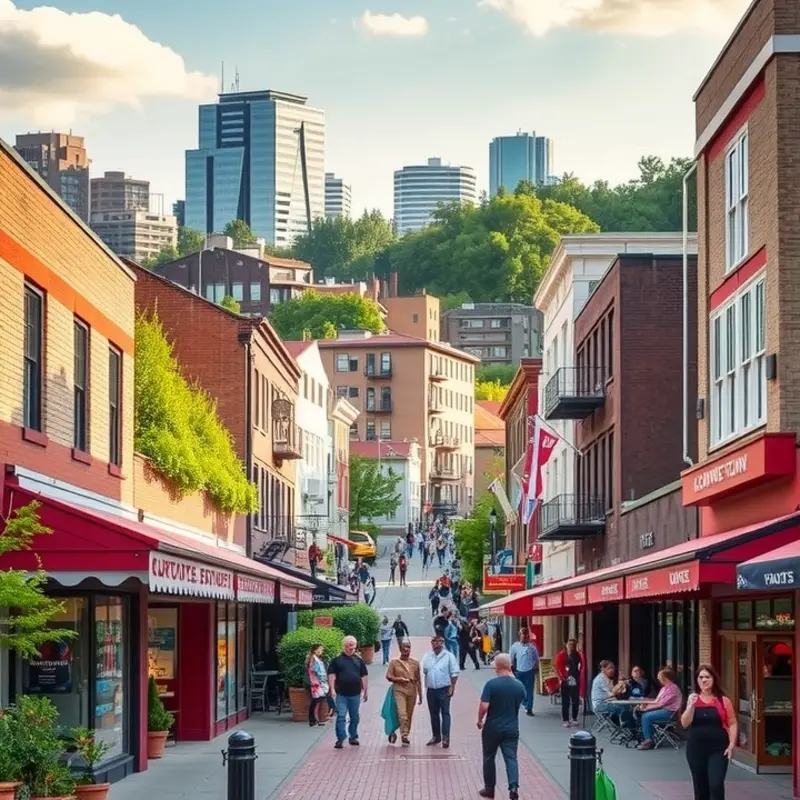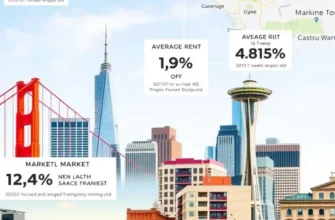Finding the perfect apartment in a new city can be daunting, especially when relocating for work, school, or lifestyle changes. Young professionals, students, couples, families, and mobile professionals all share the urge to find a space that meets their unique needs. Proximity to corporate hubs makes life easier by slicing commute times, but navigating local rental markets requires insider knowledge. Every city has its own quirks, with neighborhood vibes, average rent prices, and types of accommodation varying dramatically. Whether you’re relocating to vibrant San Francisco or the bustling streets of New York, understanding what to look for can help you make an informed decision quickly. This guide not only highlights key considerations for apartment hunting near corporate hubs but also delves into specific insights for top U.S. cities that cater to diverse renters like you.
Navigating City Life: Selecting the Right Neighborhood

Finding the perfect neighborhood near corporate hubs in major U.S. cities is vital for a fulfilling urban experience. Each city offers distinct characteristics that cater to various lifestyles, from high-energy urban centers to peaceful suburbs. When assessing neighborhoods, reflect on your priorities: Do you prefer lively nightlife or tranquil parks? Do you require quick access to public transport or the convenience of nearby shops?
Consider Your Lifestyle Preferences
Begin by listing what matters most to you. If dining and entertainment are top priorities, focus on neighborhoods known for their vibrant social scenes. For instance, Chicago’s River North is ideal for its bustling nightlife and dining options. If family life and outdoor activities are your focus, areas like Austin’s Cedar Park offer family-friendly atmospheres with access to green spaces.
Evaluate Amenities
Identify the neighborhood amenities that fit your lifestyle. Access to quality grocery stores, gyms, and medical facilities can significantly affect your living experience. In cities like New York, neighborhoods such as the Upper West Side offer these conveniences within walking distance. Amenities can also impact your budget, so weigh their importance carefully.
Assess Commuting Options
Proximity to public transport is crucial in minimizing commute times. Examine the availability and reliability of transit systems in potential areas. For example, New York City’s Financial District provides excellent subway access that can streamline your daily travels. In Chicago, living near a “L” stop offers seamless access to all corners of the city.
Explore Local Culture
The cultural vibe of a neighborhood can enrich your daily life. Austin’s South Congress is celebrated for its artistic environment and diverse community events, offering a unique cultural immersion. Experiencing local events and visiting neighborhood hangouts can give insights into whether an area aligns with your values and interests.
Check Safety and Environment
Safety is non-negotiable when selecting a neighborhood. Research crime rates and talk to residents for firsthand accounts. Additionally, consider environmental factors, such as air quality and noise levels, which can affect your wellbeing. You can enhance your apartment’s safety features; for example, check out apartment radon safety tips to ensure a safer living space.
In summary, selecting a neighborhood near corporate hubs is about balancing practical needs with personal lifestyle preferences. By considering lifestyle, amenities, transit options, local culture, and safety, you can pinpoint areas that align with your vision of city living, ensuring a satisfying and productive rental experience in any major U.S. city.
Finding the Perfect Space: Housing Options and Market Insights

When searching for the ideal apartment near corporate hubs, variety is abundant—each catering to the different preferences and needs of renters. From confining studios that appeal to minimalists and those on a tight budget, to expansive apartments designed for families or groups sharing living space, understanding the nuances of housing options is crucial.
In Seattle, driven by its flourishing tech scene, the market offers everything from downtown high-rise studios to charming neighborhood apartments nearby. Here, rental prices vary significantly; expect to pay around $1,700 for a modest studio and upwards of $2,800 for a two-bedroom apartment. This city’s market has benefitted from rapid economic growth, yet also leads to competitive and often expensive leasing scenarios.
Meanwhile, Los Angeles blends luxurious living with more affordable suburban options. Neighborhoods like Century City and Santa Monica are favored by professionals working near corporate hubs. In LA, rental prices are steeper, with studios averaging around $2,000, while two-bedroom apartments easily exceed $3,500. The expansive city spread allows for better deals in adjacent areas if commuting isn’t a concern.
In Miami, the vibrant culture and business climate offer dynamic choices, from high-rise condos to family-friendly apartments. Rental prices hover around $1,600 for studios and escalate past $2,700 for larger apartments. The influence of Miami’s international business presence keeps demand high, impacting availability and pricing.
Choosing between these types of rentals involves considering various factors. Studios are cost-effective and easier to maintain, ideal for those who prioritize location over space. In contrast, larger apartments provide comfort and are better suited for families or those who frequently entertain guests. Evaluating these against your lifestyle needs is vital in choosing appropriately.
Understanding lease agreements across different cities can also provide a significant edge. For instance, while most leases bind renters for 12 months, some locations offer more flexible terms. Los Angeles may provide short-term leases, in demand by transient or contract workers, while Seattle often favors traditional agreements. Awareness of these options allows renters to optimize their plans and financial commitments.
To stay ahead, researching market trends can uncover the best times to rent. Often, winter months bring more favorable prices as competition wanes. Renters should leverage this by timing their searches strategically.
Utilizing strategies such as negotiating lease terms and understanding various financial implications can be invaluable. For example, maintaining a healthy credit score could be beneficial when landlords assess your application. Improving your credit score can enhance your chances of securing better deals.
In conclusion, varying housing landscapes in key U.S. cities offer diverse opportunities for renters near corporate hubs. Whether prioritizing cost, space, or proximity, informed decisions rooted in understanding local markets can lead to advantageous outcomes and ideal living situations.
Final words
Finding the perfect apartment near a corporate hub is a journey filled with choices that can significantly enhance your urban living experience. By understanding your priorities—whether they include access to essential amenities, commuting convenience, or community vibe—you can make informed decisions that align with your lifestyle. As you explore neighborhoods and evaluate properties, up-to-date market knowledge will be your best ally. Embrace the excitement that comes with change and take the necessary steps to ensure your new home meets all your needs. Remember, every city has potential gems waiting to be discovered, tailored to fit the lifestyles and aspirations of renters like you.









